
Product test
OnePlus 8 Pro tested: top smartphone without compromises
by Jan Johannsen

The dreary Hamburg autumn has made me happy to have a monochrome camera on a smartphone. But even if you’re not into B&W photos, the OnePlus 8T is a temptingly good phone.
The OnePlus 8T is said to be better than the OnePlus 8 released in spring, but not as good as the OnePlus 8 Pro. Otherwise, it would have been called the OnePlus 8T Pro, right? Manufacturers have internally consistent logic, but it’s not always immediately understandable from the outside.
Compared to the 8 Pro, the 8T is cheaper and has a slightly smaller display with a lower resolution, but still a refresh rate of 120 hertz. Both smartphones have four cameras, but OnePlus swapped out the telephoto lens and colour filter camera for a macro and B&W lens in the 8T.
At 6.55 inches, the display of the OnePlus 8T is still very large. The resolution of 2400×1080 pixels gives you a razor-sharp image with a pixel density of 402 ppi, and the screen offers very high brightness. I haven’t yet had the opportunity to test it in direct sunlight, but I have no doubt the image will still be easy to see.
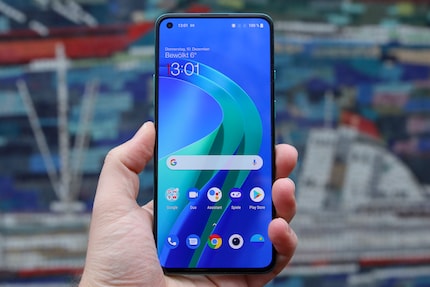
The 120 hertz means that the screen’s lines update twice as fast as with the previous 60 hertz standard. It’s been about a year and a half since smartphone manufacturers discovered 90 and 120 hertz as a selling point. I’m still not convinced. When I hold the OnePlus 8T next to another smartphone and scroll around on both, the animations in it are definitely smoother. But it’s just not a big enough deal to me to be a deciding factor when buying a smartphone. If I reduce the refresh rate to 60 hertz to extend the battery life, the OnePlus 8T still looks excellent.
Two more things are worth mentioning in connection with the display: the front-facing camera and the fingerprint sensor. The front camera sits in a hole in the upper left corner of the touchscreen. Pinhole cameras like that have become the standard, and it doesn’t get in the way. The info bar displaying the time, Wi-Fi, battery and other symbols fits very well next to it.
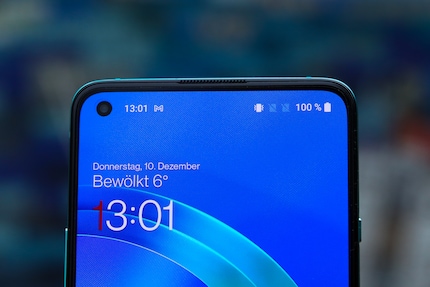
The fingerprint sensor is located at the centre of the lower third of the screen, elegantly hidden. It unlocks the OnePlus 8T reliably, but I can’t shake the feeling that classic sensors are still a bit better. Maybe it’s because I need to wait for the lock screen to show me where I need to place my finger. That is, I have to double tap the display or press the power button. I’d say hitting the right spot on the display on the first try is a mix of luck, practice and habit.
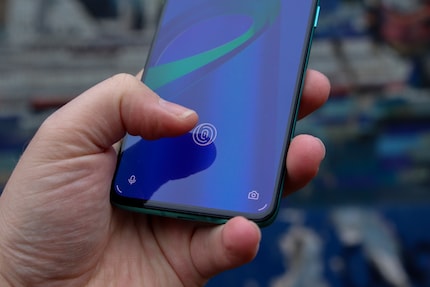
The OnePlus 8T has a 4,500-mAh battery, which places it in the top category of smartphones. Something that’s irrelevant to everyday use, but technically unusual, is that OnePlus uses two batteries with 2,250 mAh each.
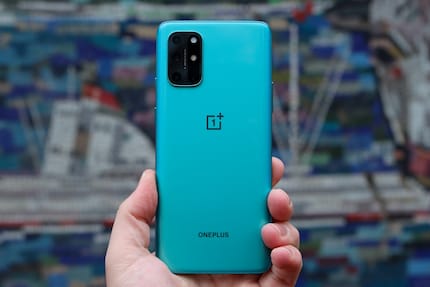
In the settings, I encountered several options that allow me to influence battery life, such as the always-on display or 120 vs. 60 hertz. But even without going for particularly power-saving settings, the OnePlus 8T’s battery lasted me the day. And should there be a day where I’m absolutely glued to my phone, that’s no problem either; Warp Charge – OnePlus’ fast charging technology – is really impressive.
To generate this much power, the power adapter has to be big – bigger than with most other smartphones. But at 65 watts (10V/6.5A), it’s got enough bang to charge even my work laptop. On business trips, you can save on luggage by packing just one charger. But more importantly, you can quickly refuel the 8T, even on a tight schedule. In 20 minutes, for example, the battery charges from 38 to 90 per cent and should be fully charged nine minutes later. So, you can have the battery charge almost fully while you get ready in the morning.
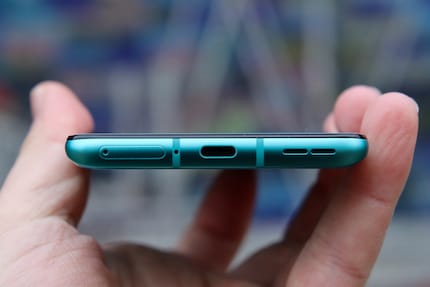
The OnePlus 8T has one port only: USB-C (3.1, Gen 1). You’ll have to connect any headphones you want to use via said port or Bluetooth 5.1. There’s no wireless charging feature, but it wouldn’t be as fast as Warp Charge, anyway.
A camera test like this in Hamburg’s autumn is a challenge. Instead of bright blue skies and sun-drenched streets with high contrast, grey dreariness prevails. But the OnePlus 8T has suitable tools on board for this. An extra monochrome camera makes rich colours secondary, and night mode lends itself to conquering early sunset shots.
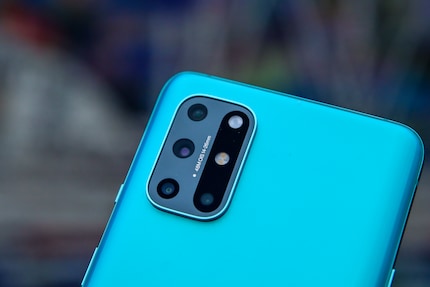
Compared to standard mode, the latter ensures sharper and better illuminated nighttime shots thanks to its longer exposure times. However, night mode coupled with the city’s light pollution can result in pictures that look as bright as day. While technologically impressive, it’s not a realistic representation of the night. I can even select night mode for the wide-angle camera, although the result isn’t as good as with the main camera. Without night mode, the pictures are more pixelated and darker, but still capture a surprising amount of brightness.
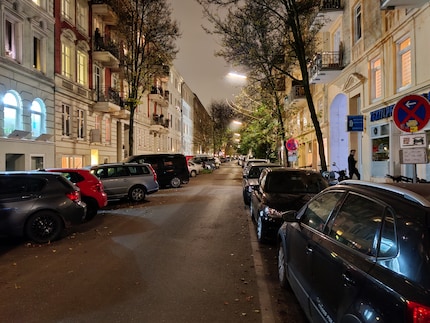
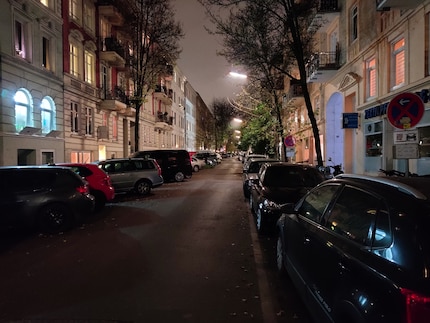
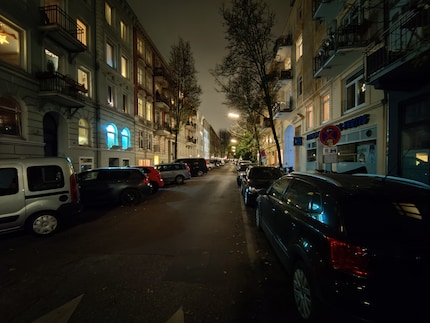
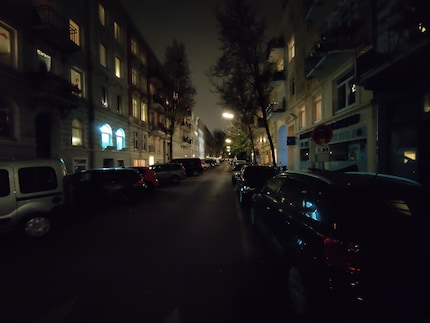
The main camera on the OnePlus 8T has a 48-megapixel resolution. By default, four pixels are combined into one, so photos end up having a resolution of 12 megapixels. This so-called pixel binning is supposed to improve image quality. You can also set the 8T’s resolution to 48 megapixels, but it’s not worth it; you then have no zoom, no wide angle, no night mode and hardly any other functions. The file is larger and you can zoom further into the image, but there’s no advantage in terms of quality.


An advantage of the high resolution is that even without a telephoto lens, it gives you 2x zoom with quality on par with standard mode. The wide-angle photos, on the other hand, come from a separate, 16-megapixel sensor. The associated lens has a 123-degree field of view, and you can activate lens correction in the camera software. That’s what I did with this test photo.

The monochrome camera only has a resolution of two megapixels, and it doesn’t need any more than that. It doesn’t actually shoot the B&W photos; it only supplements photos shot by the main camera with brightness information through the software. The results look more like black-and-white shots than colour photos with filters overtop. Especially in low light, the images develop a real analogue photo charm due to the stronger grain.

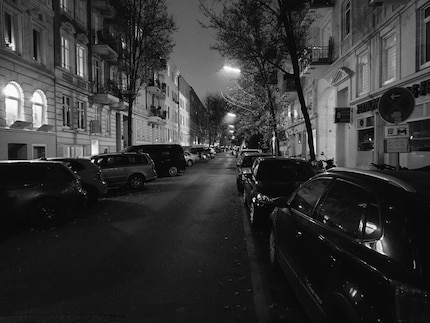
The fourth camera has a macro lens with a 5-megapixel sensor. This will get you within three to four centimetres of the subject – something the main camera can’t achieve. The 5 megapixels deliver better image quality than the typical, 2-megapixel macro cameras. But even this macro lens is a long way from those found in top-of-the-line smartphones.
The front-facing camera has a resolution of 16 megapixels. It delivers selfies with a high level of detail and vibrant-looking colours. It’s good for taking pictures of yourself, though not so much in the dark. There, selfies quickly look pixelated and grainy.


You can find all photos in their full resolution here.
The T8 comes with OnePlus’s in-house OxygenOS. The latest version is based on Android 11. Strictly speaking, it’s not an entirely separate operating system. Rather, it’s Android with a different user interface and a few changes and additions. Compared with other manufacturers, OnePlus is conservative in terms of preinstalling apps. But the one third-party app you can’t uninstall is Netflix of all things – the only streaming service I’ve managed to escape so far.
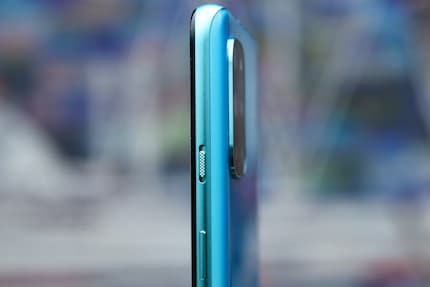
The T8 is equipped with the powerful Snapdragon 865. What’s more, it’s already got the X55 5G chipset as the system-on-a-chip. My test device with 12 gigabytes of working memory performs very well in Geekbench 5 with 884 and 3,155 points in the single and multi-core test respectively. But even the 8-gigabyte version of the OnePlus 8T shouldn’t be worse in everyday use. Internal memory also changes with the working memory; with less RAM, you get 128 gigabytes of storage, while more RAM gives you 256 gigabytes. There’s no possibility of expanding memory with a microSD card.
The OnePlus 8T isn’t as expensive as other top-of-the-line phones, but it easily keeps up with them. I’m particularly impressed by how quickly the battery charges with Warp Charge. If the size doesn’t scare you off, you can’t go wrong with this smartphone.
If you’re not totally convinced and want to spend less money on a phone, I recommend you check out my review of the OnePlus Nord and Google Pixel 4a.
When I was but a young student, I'd sit in my friend's living room with all my classmates and play on his SuperNES. Since then I've had the opportunity to test out all the newest technology for you. I've done reviews at Curved, Computer Bild and Netzwelt, and have now arrived at Galaxus.de.